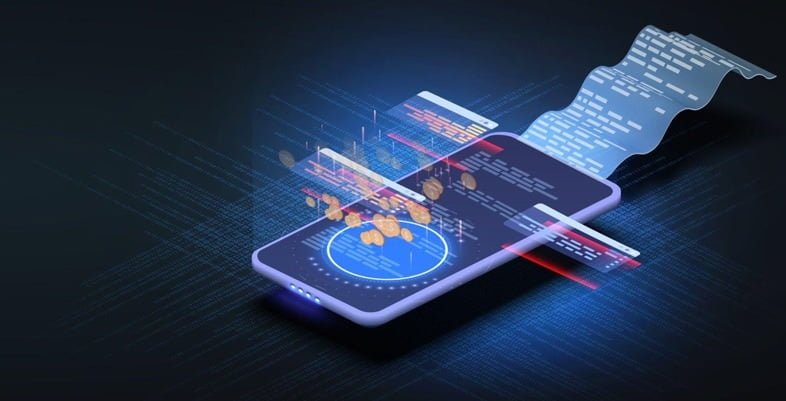Introduction
As innovations evolve, payroll systems become more advanced, scalable, and user-friendly. Businesses of all sizes need to understand these trends to stay competitive and ensure their payroll processes are efficient and secure. This article dives into the key trends and innovations shaping the future of payroll software, emphasizing their benefits and why they matter in the modern business landscape.
The Shift Toward Cloud-Based Solutions
One of the most significant shifts in payroll software is the move toward cloud-based solutions. In today’s fast-paced business environment, staying current with payroll software trends is essential for maintaining efficiency and compliance. These systems offer numerous benefits, including scalability, ease of access, and cost-effectiveness. Cloud-based solutions do not necessitate substantial initial investments in hardware and infrastructure, which is not the case with traditional on-premises software. Instead, businesses pay a subscription fee, often including automatic updates and support.
Moreover, cloud-based options offer the adaptability to retrieve payroll information from any location, which is especially beneficial in the current era of remote work. This flexibility ensures that payroll administrators can manage payroll processes even when not in the office, increasing efficiency and reducing downtime. The adoption of cloud technology is growing, as evidenced by the top cloud trends for 2023, indicating that businesses recognize the immense potential cloud solutions offer.
Integration with HR Management Systems
Seamless integration between payroll software and HR management systems is becoming increasingly important. This integration improves data accuracy, enhances compliance, and offers a better employee experience. When integrated with HR systems, payroll software allows for a smoother flow of data between departments, reducing the risk of errors and inconsistencies. Additionally, this synergy fosters collaboration between HR and finance teams, leading to more strategic decision-making and resource allocation. As a result, organizations can better align their payroll practices with overall business objectives, driving efficiency and effectiveness.
For example, a company that integrates payroll software with its HR management system can streamline onboarding, benefits administration, and time-tracking processes. This holistic approach saves time and ensures that all employee-related data is continually updated and accurate. This integration can also automate compliance with various labor laws and regulations, reducing the administrative burden on HR departments and minimizing the risk of non-compliance penalties. Furthermore, by providing real-time access to critical employee information, businesses can enhance their responsiveness to employee inquiries and needs, ultimately improving overall satisfaction.
Enhanced Security Measures
Given the sensitive nature of payroll data, security is a top priority for businesses. Modern payroll software has advanced security measures to protect employee and financial information. These measures include multi-factor authentication, end-to-end encryption, and regular compliance checks. Multi-factor authentication increases security by demanding users to provide two or more verification factors in order to access the system. This added layer of protection significantly reduces the likelihood of unauthorized access and potential data breaches.
Robust security measures are vital in protecting against data breaches and cyber threats, ensuring the company and its employees have peace of mind. In addition to these technologies, businesses must adopt comprehensive security policies and best practices. Following cybersecurity best practices is essential to maintaining a secure payroll system. These practices include regular security audits, employee training, and the implementation of strict access controls. Moreover, establishing an incident response plan can further enhance an organization’s ability to respond swiftly to any potential security threats or breaches.
Automation and AI in Payroll Processing
Automation and artificial intelligence (AI) are revolutionizing payroll processing by reducing manual errors, speeding up processes, and ensuring compliance. Automation can manage mundane tasks like data input, tax computation, and salary dispersion, allowing HR staff to concentrate on more strategic endeavors. Automating repetitive tasks helps businesses lower the chances of human error, which can result in expensive errors. In addition to efficiency gains, this shift allows organizations to allocate resources more effectively toward employee engagement and development initiatives.
AI-powered algorithms can also predict potential issues and suggest optimizations, making payroll processing faster and more intelligent. These algorithms can analyze vast amounts of data to identify patterns and trends, helping businesses to make more informed decisions. For instance, a small company implementing AI to handle its payroll tasks saw significant time savings and increased accuracy, allowing HR staff to focus on more value-added tasks. Furthermore, as AI continues to evolve, it will likely introduce even more sophisticated capabilities that can enhance forecasting accuracy and improve overall payroll strategies.
Real-Time Data and Analytics
The push toward real-time data access is transforming how businesses handle payroll. Real-time data provides up-to-the-minute information, which is crucial for making informed decisions. With payroll software that offers real-time analytics, companies can monitor and optimize costs, identify trends, and ensure compliance with labor laws.
Companies leveraging real-time analytics can gain insights into overtime patterns, labor costs, and employee productivity. This data-driven approach allows businesses to identify inefficiencies and opportunities for cost savings. With access to real-time data, companies can make timely adjustments to their payroll processes, ensuring they remain competitive and compliant in an ever-changing business environment.
Mobile Accessibility
Mobile accessibility is another growing trend in the payroll software industry. Mobile-friendly solutions allow business owners and employees to access payroll information on the go, enhancing flexibility and convenience. With mobile accessibility, employees can view their pay stubs, update personal information, and even submit time-off requests from their smartphones.
The future of mobile payroll solutions looks promising, with continued advancements expected in user experience, security, and functionality. As mobile technology evolves, we can anticipate even more innovative features being integrated into payroll software. This trend is significant for businesses with a mobile workforce, as it ensures that employees can access essential payroll information anywhere.
Conclusion
Staying updated with the latest trends and innovations in payroll software is crucial for businesses aiming to maintain efficiency and compliance. From cloud-based solutions to AI-driven automation and enhanced security measures, the future of payroll software is poised to bring increased flexibility, accuracy, and convenience. By embracing these advancements, businesses can streamline payroll processes and focus on broader organizational goals.








